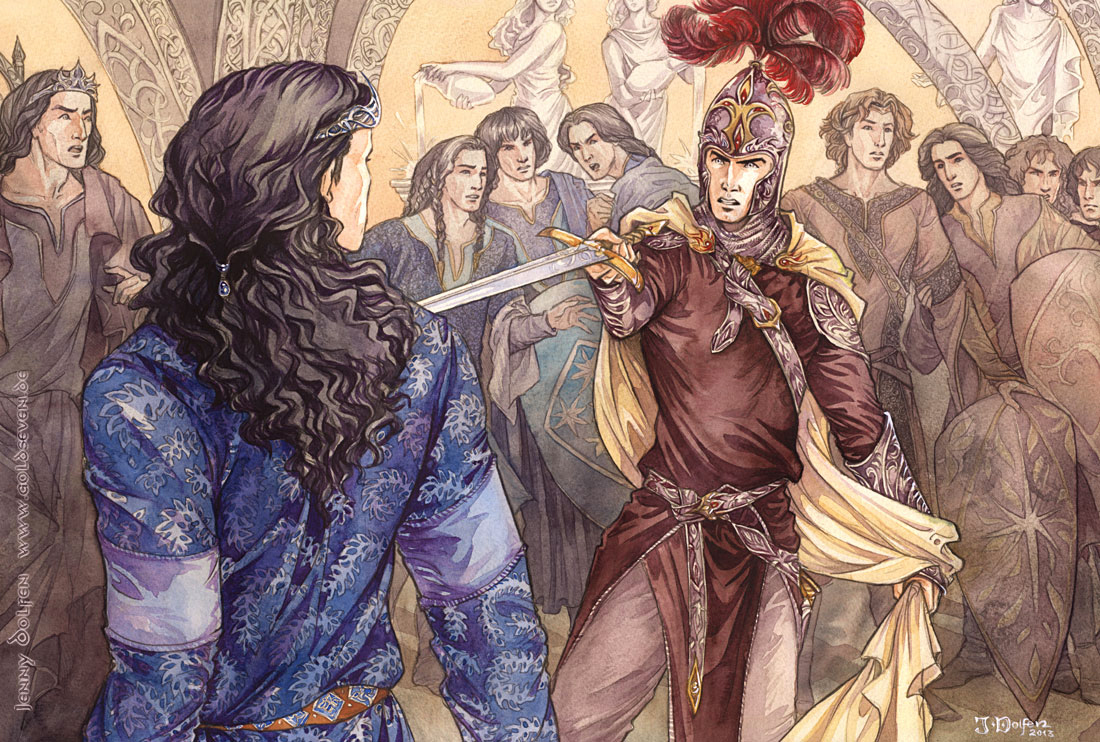Those of you with more knowledge of the martial arts than I: besides aesthetics, is there any difference in the functionality of the different shapes of swords? Stabbing vs. piercing is part of what I'm asking, but there's more. Is the curved design because of improvements or limitations in the forging process, or because it's meant to be drawn quicker? Are some swords intentionally designed to be more difficult to use skillfully, because of status/class issues?
While we probably could dismiss all of this, since it's not something the audience would likely know/care about, every method of warfare is also a political or philosophical statement (see, the Greek phalanx, which the Greeks constantly said only worked with free men fighting for their polis, not with slaves fighting for a king). It's something I would like to consider, if only for the illusion of depth Tolkien is so revered for.
Yes, there are certainly different functions for different sword forms leading to different fighting styles. In time, specialized forms are designed for different kinds of soldiers.
For example, piercing weapons typically create more trauma than slashing weapons, so you might specialize a sword for piercing, such as a rapier. However, the rapier has limited cutting power due to the cross section being too wide, a requirement of a long, thin blade. Therefore cavalry would not be able to use it. You don't want to do much stabbing on a charging horse, because you are likely to either break your blade or lose it.
Cavalrymen (when they were last around) used sabers with curved blades, like the one picture above. Curved blades do a better job of slicing, because you put the force behind a smaller piece of metal, and you have a higher likelihood of striking your target "perpendicularly", thus imparting more force.
Now, to go further back, yes, curved blades are easier to make. It is easier to hammer out the bevel (angled cutting edge), because you don't have to even it out on the other side, risking the integrity of the blade.
Straight blades give you more options. They are better for piercing because the point is more in line with the hilt. They can also do a good job of cutting, as long as the blade is wide enough to bear a thinner cross-section.
The xiphos, for example, is a short sword, designed for use at close quarters, paired with a shield. The leaf-shaped blade adds weight to cuts, allowing you to get more cutting power out of a shorter blade. It also has a narrow taper, giving it a good thrusting point. It is a fantastically versatile blade, but the design comes from the bronze age, when you needed more meat on a cutting blade for it to hold up in battle. An effective sword of bronze also can't be too long. Thus without a shield, a xiphos wielder is quite vulnerable.
Leaf-shaped blades don't make a lot of sense in longer blades. You don't need the additional weight, and it just makes the blade cumbersome. The balance point moves too far away from the hilt.







